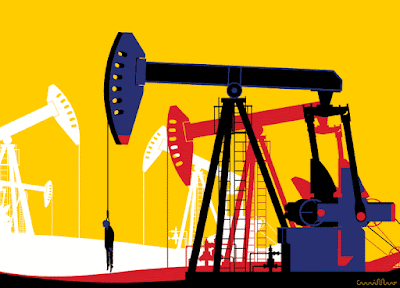Running the Economy-I
Just imagine this text and the upcoming as a series and we have only 1 season of 6 episodes or so, that explains how the economy works. The series would give you a clear outline of the basic concept of changes in interest rates that directly affect you and me. Thanks to Ray Dalio.
Let's begin.
 |
| Andrë Carrihlo |
The economy works like a simple machine. But many people don't understand it — or they don't agree on how it works — and this has led to a lot of needless economic suffering. Though it's unconventional, anticipate, and sidestep the global financial crisis and has worked well for over 30 years.
Though the economy might seem complex, it works in a simple, mechanical way. It's made up of a few simple parts and a lot of simple transactions that are repeated over and over again a zillion times. These transactions are above all else driven by human nature, and they create 3 main forces that drive the economy.
- Productivity growth,
- The Short-term debt cycles,
- The Long-term debt cycles.
We'll look at these three forces and how laying them on top of each other creates a good template for tracking economic movements and figuring out what's happening now.
Let's start with the simplest part of the economy: Transactions. An economy is simply the sum of the transactions that make it up, and a transaction is a very simple thing.
You make transactions all the time. Every time you buy something you create a transaction. Each transaction consists of a buyer exchanging money or credit with a seller for goods, services, or financial assets.
Credit spends just like
money, so by adding together the money spent and the amount of credit spent,
you can know the total spending. The total amount of spending drives the
economy. If you divide the amount spent by the quantity sold, you get the
price. And that's it. That's a transaction. It is the building block of the
economic machine.
All cycles and all forces in an economy are driven by transactions. So, if we can understand transactions, we can understand the whole economy. A market consists of all the buyers and all the sellers making transactions for the same thing.
For example, there is a wheat market, a car market, a stock market, and markets for millions of things. An economy consists of all the transactions in all of its markets. If you add up the total spending and the total quantity sold in all of the markets, you have everything you need to know to understand the economy.
It's just that simple.
I am pausing here and will continue with the second episode after someday when you are restful to read one.
We make your 2 minutes cherishable- Finbolts
Until next share this with your friends on - Facebook Instagram WhatsApp.
Finnomy
👌
ReplyDelete